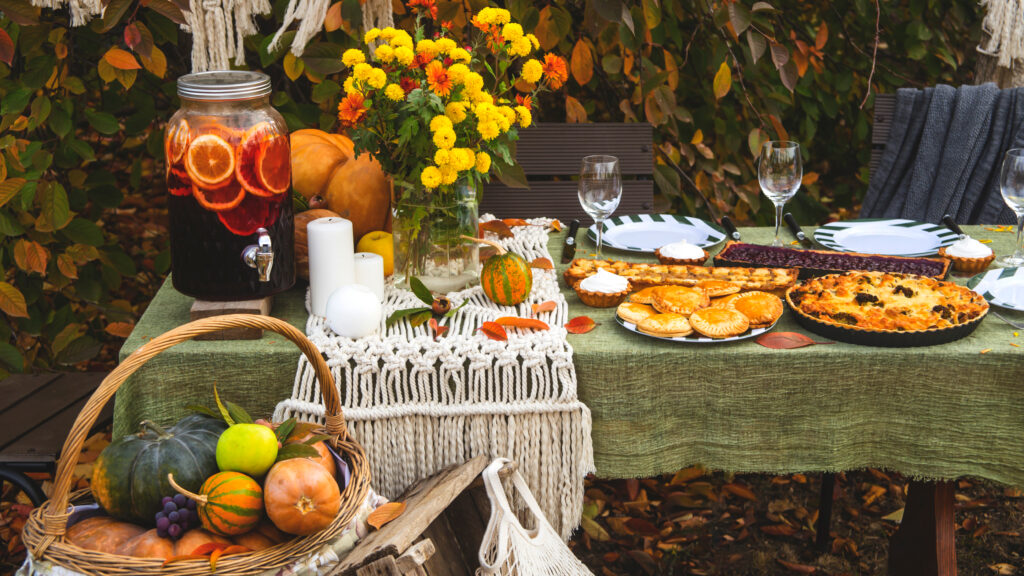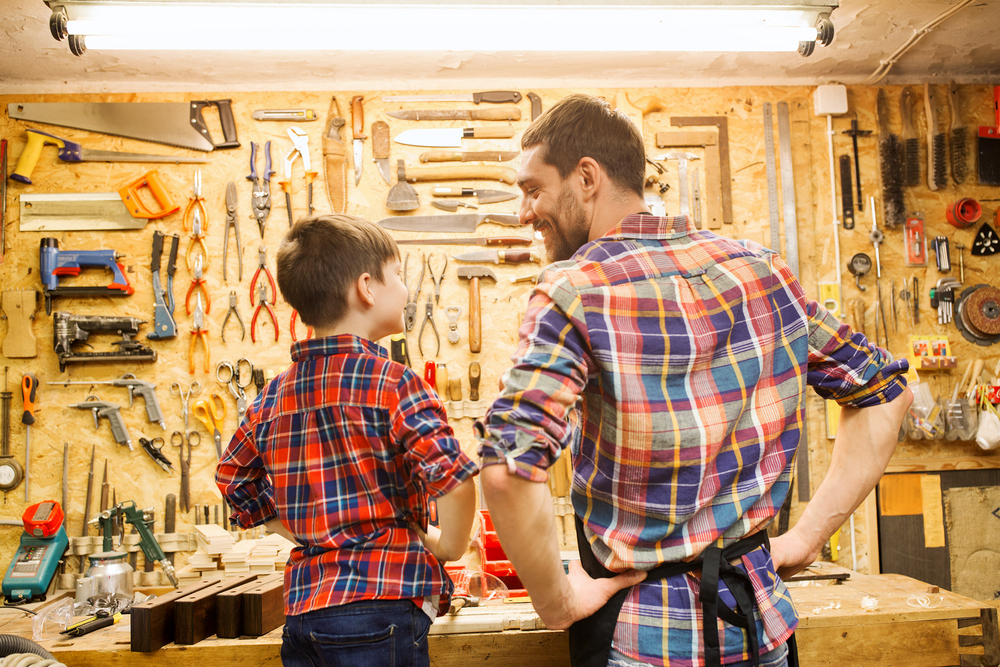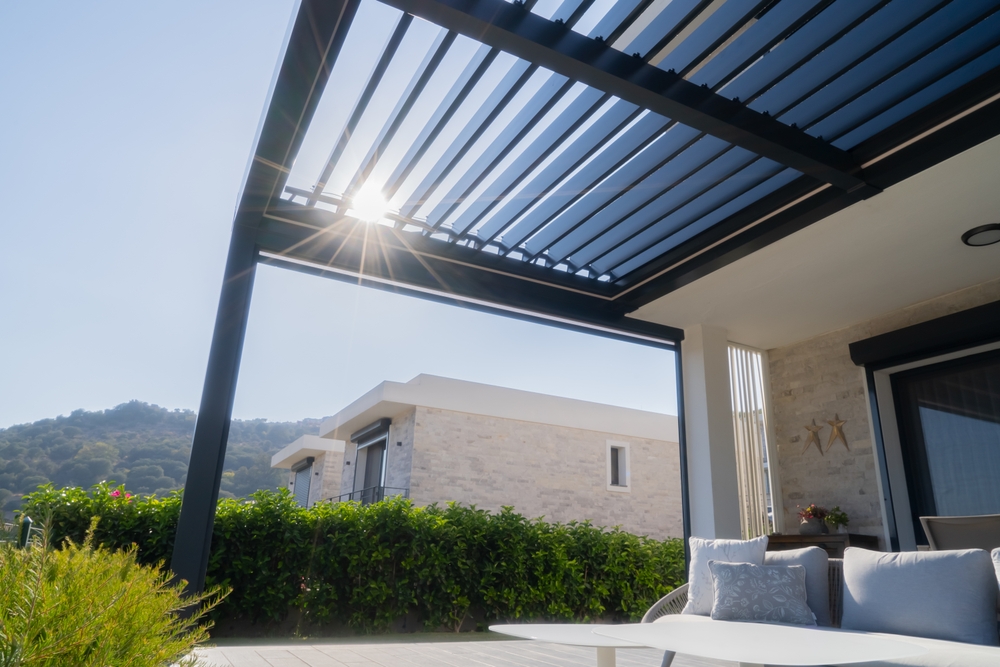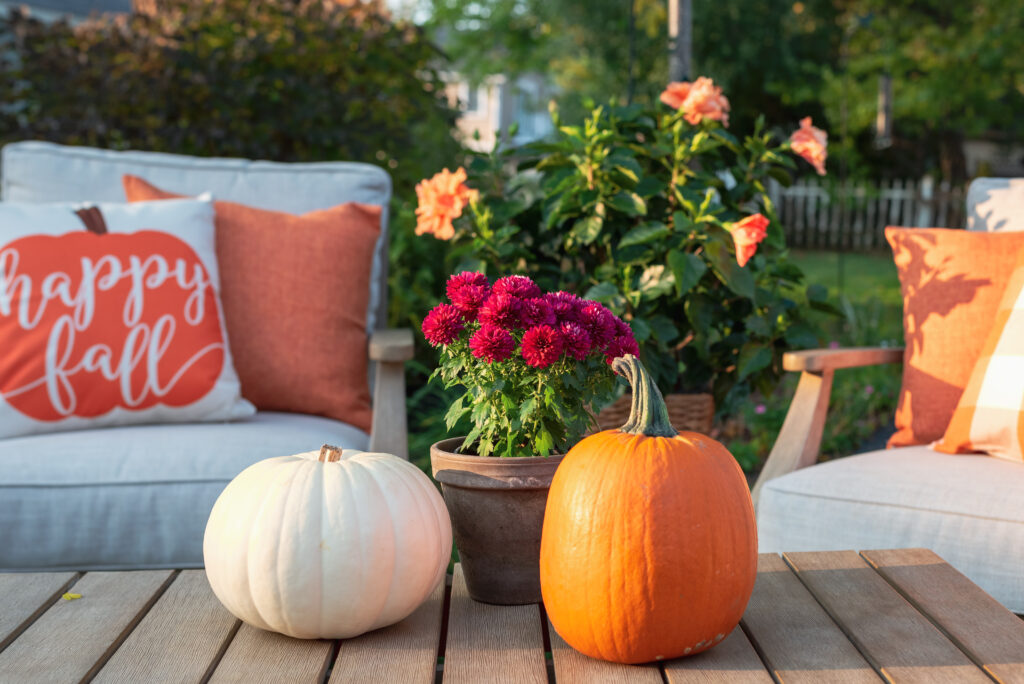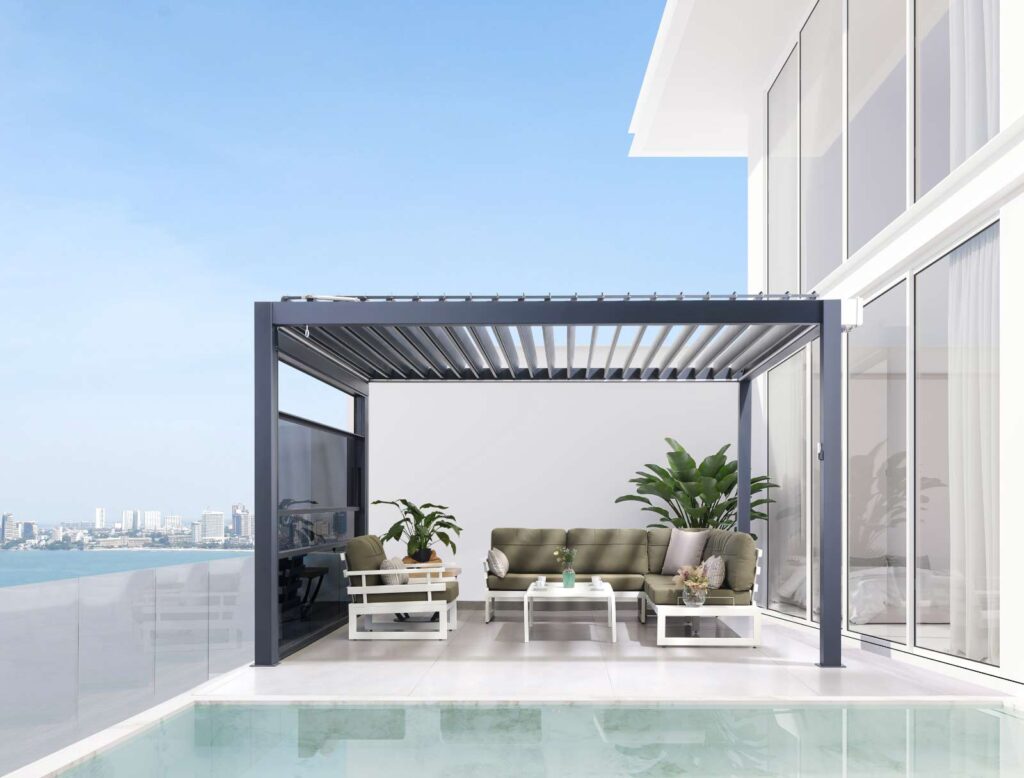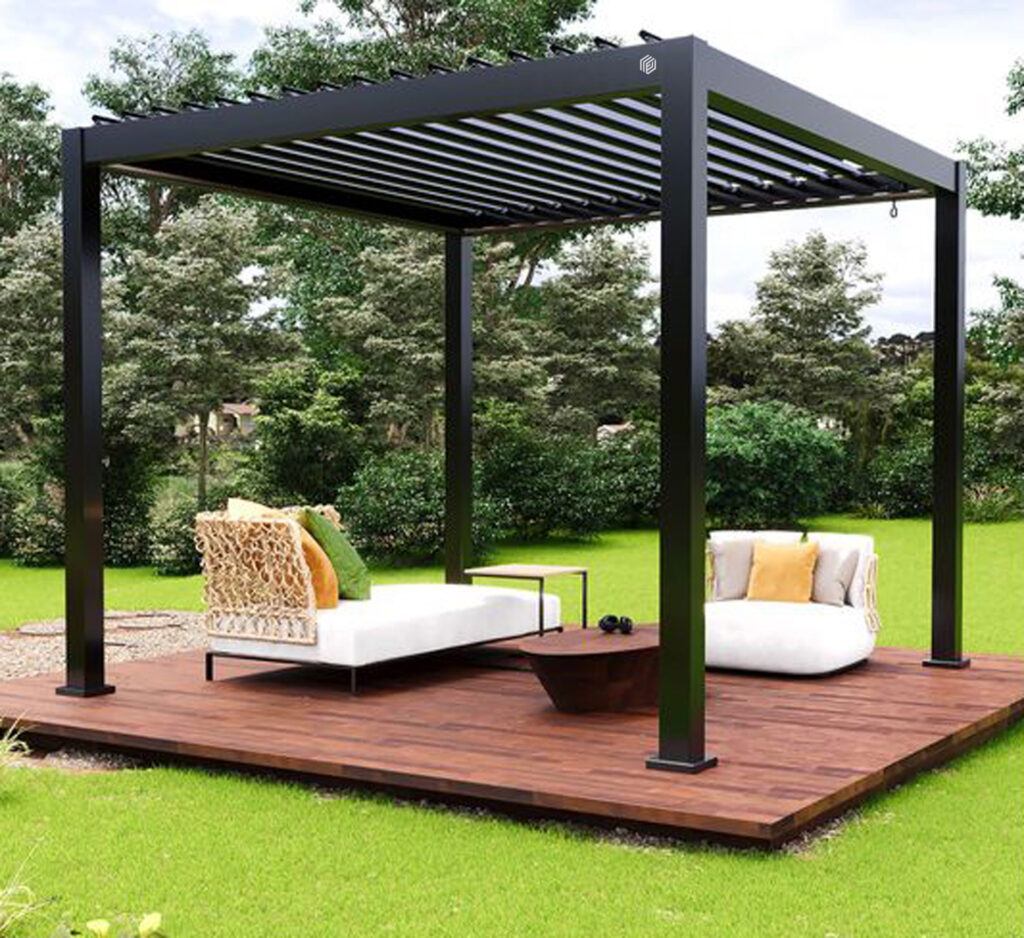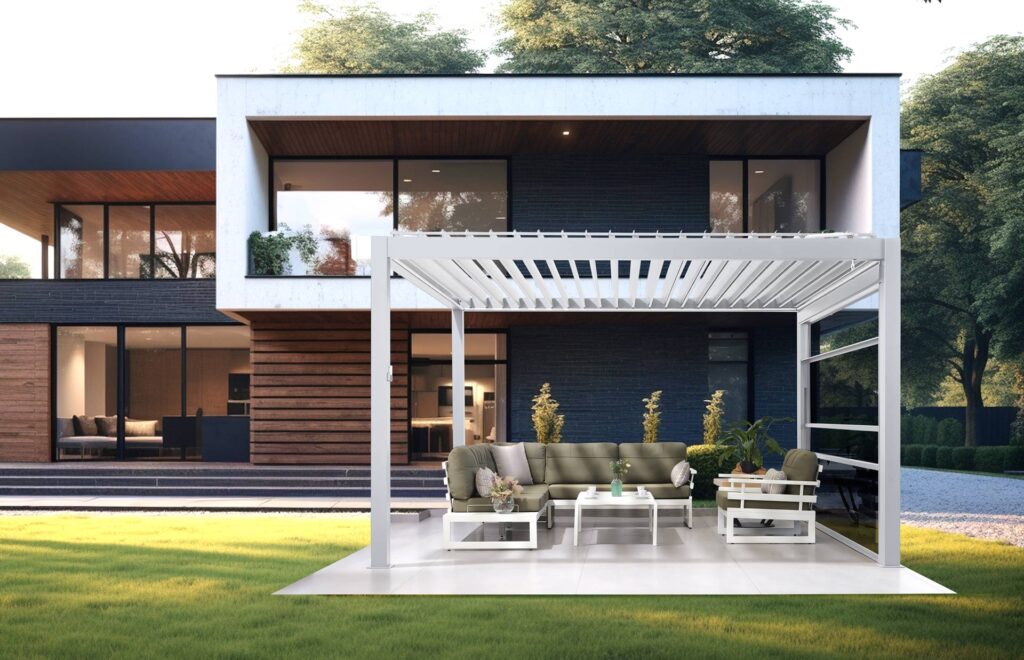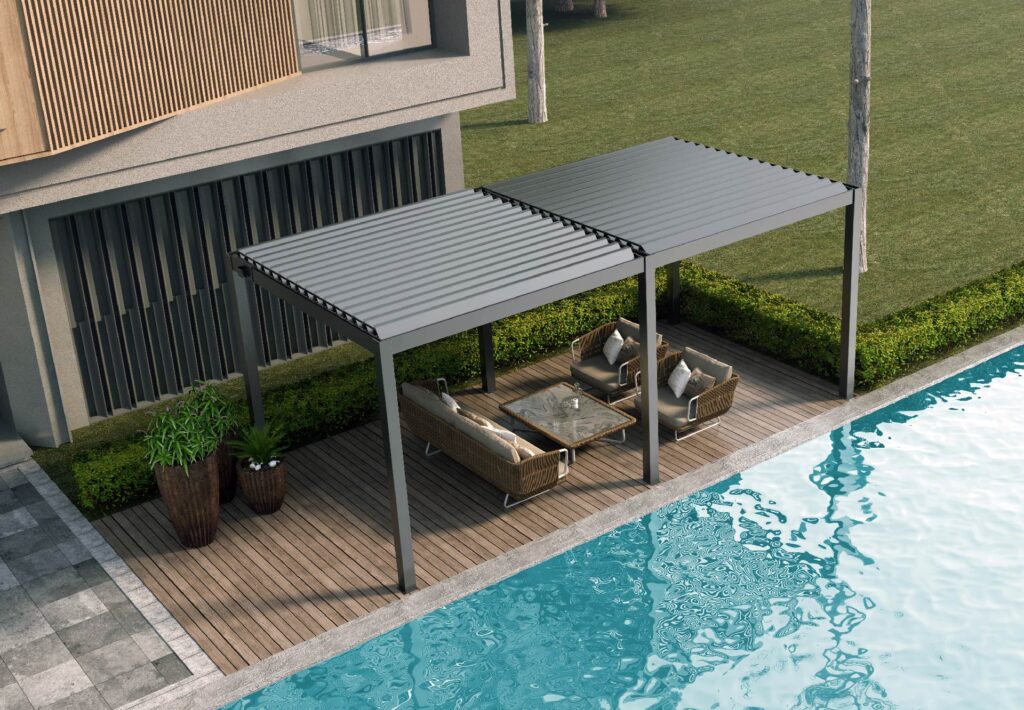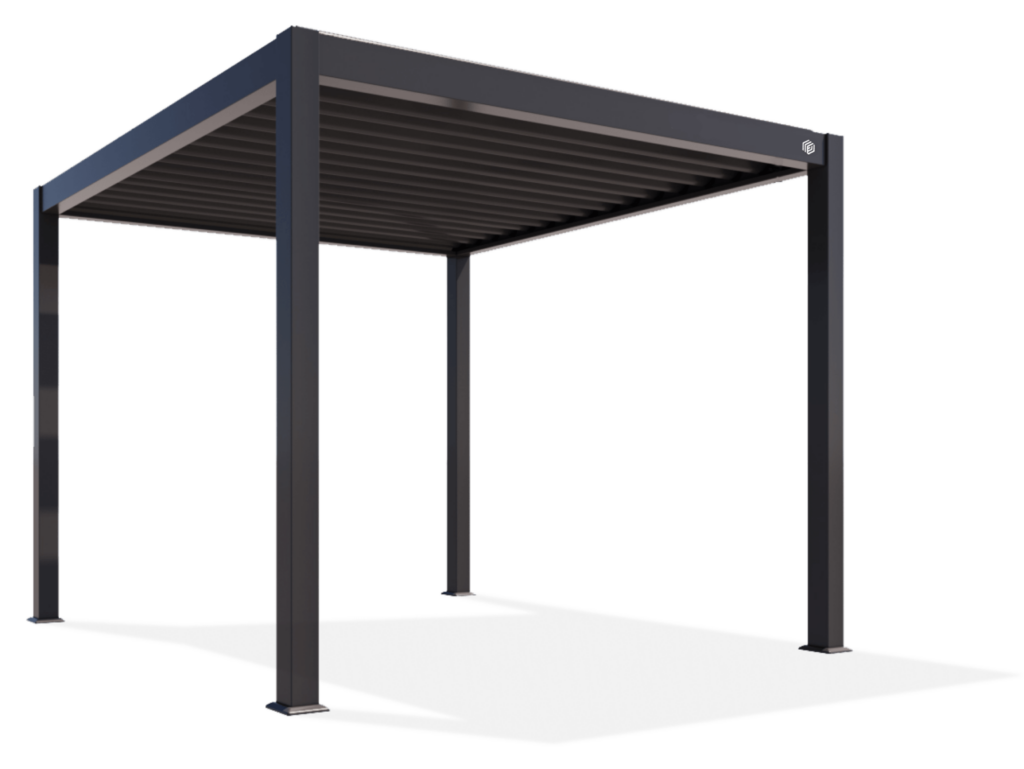Whether you’re designing a backyard retreat or planning a shaded space for outdoor dining, choosing where and how to build your pergola is just as important as what you build it with. The surface beneath your pergola plays a major role in stability, longevity, and overall experience. It’s not the flashiest part of the project but it’s one of the most important.
This guide walks you through what works (and what doesn’t) when it comes to building a pergola on different backyard surfaces. Our goal? To help you feel confident, prepared, and ready to create something that lasts.
Why Your Surface Matters
Before you choose a pergola kit or start prepping your tools, take a good look at your build site. Not all surfaces offer the same support or stability, and some may need extra prep to keep your pergola secure over time.
The right surface will help:
- Prevent shifting or sagging
- Ensure a level, even installation
- Improve drainage and durability
- Support the weight of the structure
And here’s the good news: there’s a solution for almost every setup. You just need to match the right surface with the right prep and we’re here to walk you through it.
Best Surfaces for Building a Pergola
1. Concrete Patios
Let’s start with the most common and one of the most reliable options.
- Why it works: Concrete is flat, solid, and built to support weight over time.
If you already have a poured patio or walkway, this can be the fastest and most stable option for building a pergola without a lot of prep. Just make sure your slab is in good condition (no major cracks or drainage issues).
2. Paver Patios
Pavers add visual interest and a more natural look but they require extra care when building.
- Why it works: With the right base and proper anchoring, pavers can support a pergola beautifully.
- What to watch for: Uneven pavers or shifting bases can lead to instability.
You may need to remove a few pavers and anchor the posts to a concrete or gravel foundation underneath. It’s worth the extra step for both safety and longevity.
3. Wood Decks
Have an existing deck and wonder if it can handle a pergola? The answer is yes with the right structural support.
- Why it works: Elevated decks can offer a great footprint for a pergola, especially for second-story or compact spaces.
- Important: Make sure your deck frame can handle the added weight. Reinforcing the joists or beams may be necessary.
For wood decks, proper anchoring is critical to prevent swaying and to protect both the deck and the pergola over time.
4. Grass or Soil
Technically? You can build a pergola directly on grass or soil but it’s not recommended without added support.
- Why it’s tricky: These surfaces shift over time and don’t offer the structural stability needed for long-term performance.
- Better solution: Pour concrete footings or use ground anchors designed for pergolas.
If you love the idea of a natural setting, think of a pergola in the middle of your garden or lawn this method can absolutely work. It just takes a little more planning up front.
5. Gravel or Crushed Stone
This is a great middle ground between full concrete and natural landscaping.
- Why it works: When compacted well, gravel offers solid drainage and decent stability.
- Tip: Combine with post brackets and concrete footings to ensure a firm anchor.
It’s also a great aesthetic match for modern or minimal backyard designs plus, it’s lower maintenance than grass.
Surfaces to Avoid (or Prep with Caution)
Not every surface is pergola-ready. Here are a few that need extra consideration or a rethink.
Loose Sand or Uncompacted Soil
Shifts too easily. Won’t hold anchors long-term.
Uneven or Sloped Ground
Can affect structure stability and lead to drainage problems. Always level the surface first or use adjustable footings.
Old or Cracked Concrete
May need resurfacing or reinforcement to avoid long-term issues with anchoring or water damage.
A Solid Start Builds a Beautiful Finish
At PatioSphere, we believe outdoor spaces should feel simple, lasting, and intentional. That includes what’s beneath your feet. Whether you’re building a pergola on a poured patio, a quiet gravel nook, or a custom deck, starting with the right surface sets the tone for everything that comes next.
We design our high-quality aluminum pergolas to work across a range of surface types with smart shade features, clean lines, and clear, straightforward instructions that make installation feel satisfying, not stressful. Because building a pergola shouldn’t feel like a construction project it should feel like progress.Build it right, enjoy it longer, and make every moment outside feel like home.We’re here to help you build something beautiful, from the ground up.

